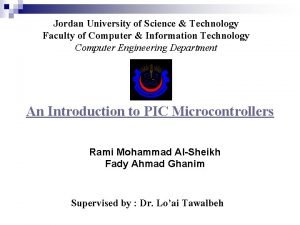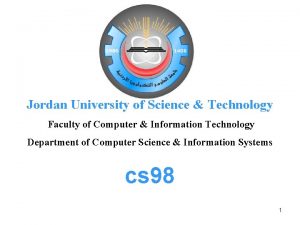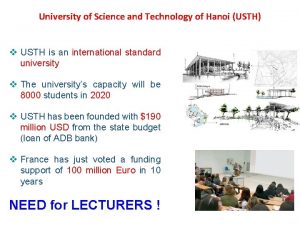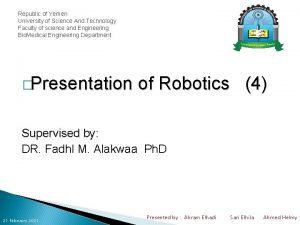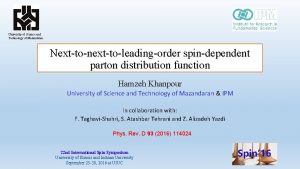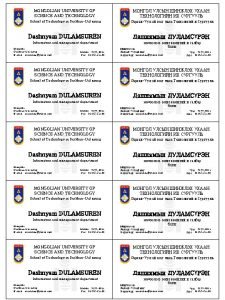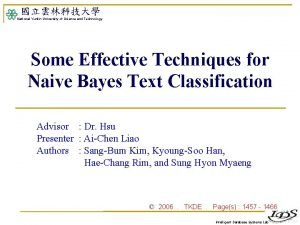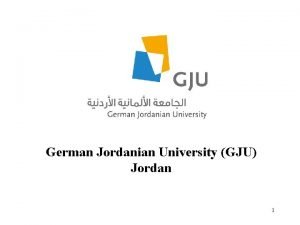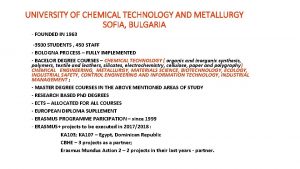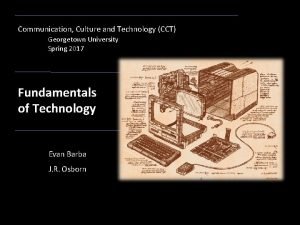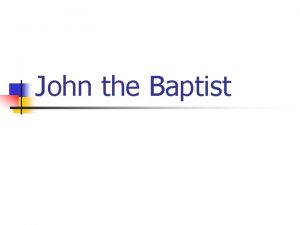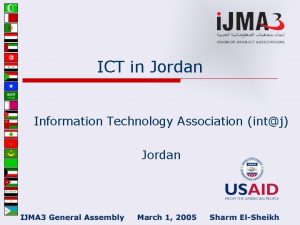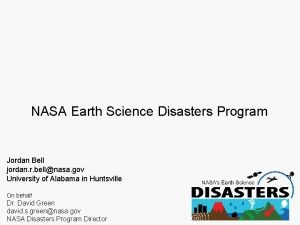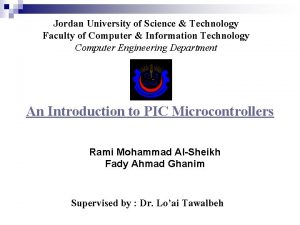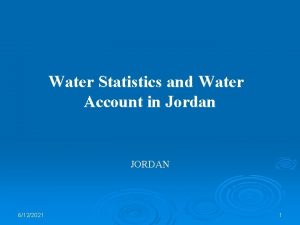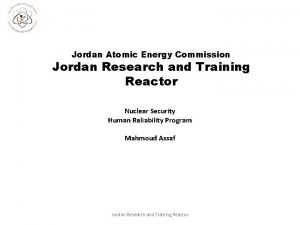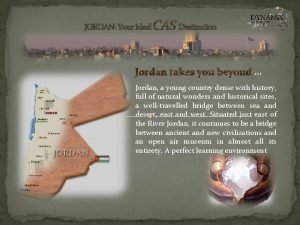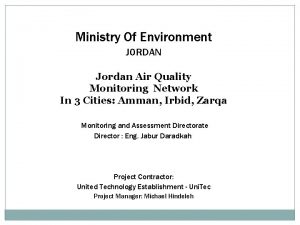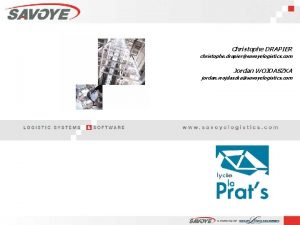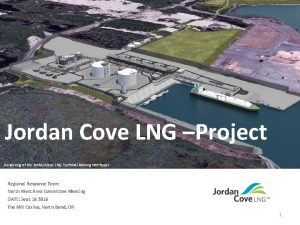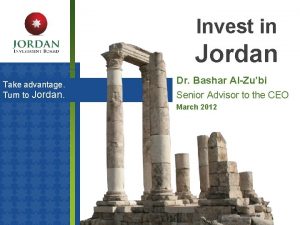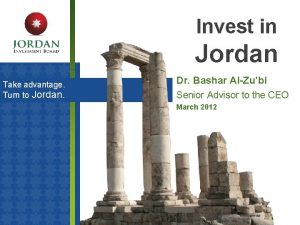Jordan University of Science and Technology Department of






























- Slides: 30

Jordan University of Science and Technology Department of Nuclear Engineering Coupling of the Thermal-Hydraulic System Code (RELAP 5) and the Monte-Carlo Neutronics Code (Serpent) Rabie Abu Saleem

Outline: Ø Introduction Ø Components of Coupling Ø Convergence Criteria Ø Codes Ø Benchmarking and Problem Details Ø Models and Meshing Ø Methodology & Results Ø Conclusion and Future Work

Introduction • Interdependence between several physics.

Components of Coupling 1. Coupling method 1. Loose 2. Coupled codes. 2. System code with MC 3. Transient vs. steady state. 3. Steady state 4. Spatial mesh overlay. 4. Fixed 5. Coupling approaches. 5. Serial 6. Coupled convergence criteria. 6. To be discussed later

Convergence Criteria • Monte-Carlo Inherent Uncertainty • Relative Change in Fuel and Cladding Temperatures

Coupled Codes • Serpent ➢ 3 D continuous energy MC reactor physics calculation code. ➢ Developed by VVT Technical Research Centre of Finland. • RELAP 5 (Reactor Excursion and Leak Analysis Program) ➢ Best-estimate simulation of LWR coolant system during postulated transients and accidents. ➢ Developed by the U. S. Nuclear Regulatory Commission (NRC).

Benchmarking and Problem Details • OECD/NEA and U. S. NRC PWR MOX/UO 2 Core Transient Benchmark. • Core design parameters: Number of fuel assemblies 193 Power level (MWth) 3565 Assembly pitch (cm) 21. 42

Benchmarking and Problem Details • Assembly Design Parameters: Fuel lattice, fuel rods per assembly 17 x 17, 264 Number of control rod guide tubes 24 Number of instrumentation guide tubes 1 Pin pitch (cm) 1. 26 Active fuel length (cm) 365. 76

Benchmarking and Problem Details • Assembly Boundary conditions: Inlet temperature (K) 560. 00 Inlet flow rate (kg/s) 82. 12 Outlet pressure (MPa) 15. 50 Single assembly power MW(th) 18. 47

Benchmarking and Problem Details Materials Arrangement in Fuel Pin Dimensions Cell Radius Material Cell Radius Dimension (cm) r 0 - r 1 fuel r 1 0. 3951 r 1 - r 2 gap r 2 0. 4010 r 2 - r 3 clad r 3 0. 4583

Benchmarking and Problem Details • Approximations for Guide tube: Cell radius material Cell Radius Fuel (cm) r 0 - r 1 water r 1 0. 5624 r 1 - r 2 clad r 2 0. 6032

Models and Meshing • RELAP 5 Model ✕ 24 Axial Cells ✕ 10 Mesh Points ✕ 9 Intervals Fuel : 6 Gap : 1 Cladding : 2

Models and Meshing • Serpent Model 1000✕ ✕ 24 Levels 100✕

Models and Meshing • Serpent Model – Material composition Material UO₂ Density (g/cmᶟ) Composition 10. 24 U²³⁵ : 4. 2 wt%, U²³⁸ : 95. 8 wt% Cladd 6. 504 Coolant 0. 75206 Zr: 98. 23 wt%, Sn: 1. 5 wt%, Fe: 0. 12 wt%, Cr: 0. 1 wt%, N: 0. 05 wt% H₂O at 560 K and 15. 5 MPa

Methodology and Results • Scheme Ⅰ (Serpent 1 st) Driving Script: BASH Shell Exchanging File: Python 2. 7 Convergence Testing: MATLAB

Results of Scheme I

Results of Scheme I

Methodology and Results • Scheme Ⅱ (RELAP 5 First) Driving Script: BASH Shell Exchanging File: Python 2. 7 Convergence Testing: MATLAB

Results of Scheme II

Methodology and Results • Scheme Ⅱ (Volume- Weighted Average Fuel Temperature Feedback)

Methodology and Results • Scheme Ⅱ (Volume- Weighted Average Fuel Temperature Feedback)

Methodology and Results • Convergence of the Normalized Axial Power

Methodology and Results • Effect of temperature feedback calculations

Methodology and Results • Convergence of Fuel Temperature

Methodology and Results • Convergence of Cladding Temperature)

Methodology and Results • Convergence of Coolant Temperature

Methodology and Results • Convergence of Coolant Density)

Conclusions • Different coupling schemes were used, and different convergence criteria were implemented based. • Starting with RELAP 5 showed better consistency in the normalized axial power between different iterations. • Using proper effective fuel temperature feedback can significantly influence the convergence speed and existence. • Using volume-weighted average effective fuel average temperature shows good convergence behaviour.

Future Work • Different benchmark problems. • Other types of physics and their effect on the operation of a nuclear reactor. • Different codes and different methods for cross section generation.

THANK YOU
 Jordan university of science and technology
Jordan university of science and technology Jordan university of science and technology
Jordan university of science and technology Jordan university of science and technology
Jordan university of science and technology University of science and technology of hanoi (usth)
University of science and technology of hanoi (usth) Ulsan national institute of science and technology (unist)
Ulsan national institute of science and technology (unist) The university of science and technology yemen
The university of science and technology yemen University of shanghai for science and technology
University of shanghai for science and technology University of science and technology of mazandaran
University of science and technology of mazandaran Npust scholarship
Npust scholarship University of science and technology kumasi
University of science and technology kumasi Mongolian university of science and technology logo
Mongolian university of science and technology logo National yunlin university of science and technology
National yunlin university of science and technology Computer science department columbia
Computer science department columbia Think central science fusion
Think central science fusion German university jordan
German university jordan Science is my favorite subject because
Science is my favorite subject because Oklahoma alternative placement program
Oklahoma alternative placement program Principal certification oklahoma
Principal certification oklahoma E & it department odisha
E & it department odisha Iit delhi polymer science
Iit delhi polymer science Department of information technology
Department of information technology Department of electronics & information technology
Department of electronics & information technology University of chemistry and technology in prague
University of chemistry and technology in prague University of chemical technology and metallurgy
University of chemical technology and metallurgy Moscow state university of design and technology
Moscow state university of design and technology Georgetown university communication culture and technology
Georgetown university communication culture and technology Neptun bme épk
Neptun bme épk Budapest university of technology and economics
Budapest university of technology and economics Bme 1782
Bme 1782 University of chemistry and technology prague tuition fee
University of chemistry and technology prague tuition fee Kazakh university of technology and business
Kazakh university of technology and business
